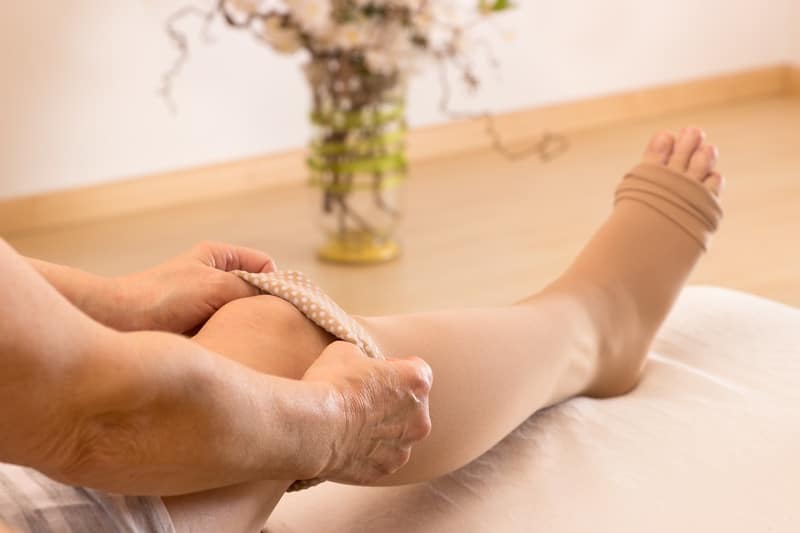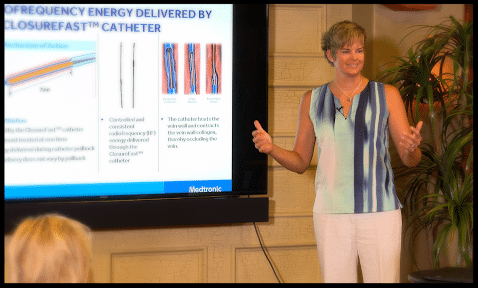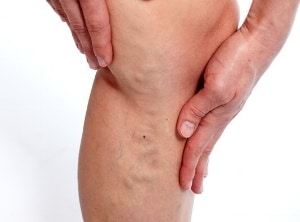
Compression Stockings may help Varicose Veins…for those who wear them
If you just googled “compression stockings for varicose veins” to find this article, you are far from alone.
Millions of Americans have looked at compression stockings as a non-surgical alternative to help deal with the discomfort of varicose veins and other peripheral vascular concerns. Perhaps not knowing that there are newer, effective, and minimally invasive procedures available, many have purchased compression stockings as a home remedy for varicose veins. And studies show that many of those stockings are now sitting abandoned, in a drawer or storage.
Why does everyone hate compression stockings?
Properly fitted compression stockings are believed to be effective in reducing lymphedema, reducing the incidence of deep vein thrombosis and venous ulceration, and increasing vascular circulation in cases of varicose veins and Chronic Venous Insufficiency (CVI).
However, compression stockings don’t work if they are not worn. A research review published on the National Center for Biotechnology Information website noted that 30-65 percent of Americans simply stop wearing their prescription compression stockings, for a variety of reasons:
- pain and discomfort of wearing compression stockings
- difficulty experienced in trying to put on the compression hose
- don’t like the way the compression stockings look
- feel compression socks are ineffective
Skin irritation is also a factor, and remains an important one in hot climates, such as Arizona.
Alternatives to Compression Stockings for Varicose Veins
If you have tried compression stockings and found that you just are not comfortable in them, there is still hope for decreasing your leg pain, improving your vascular health and improving the appearance of your legs. With a straightforward, but complete vein exam and duplex ultrasound, a qualified vein specialist can tailor a treatment plan for you that is much easier, more comfortable and more effective than you might realize is possible.
[1] https://www.ncbi.nlm.nih.gov/pmc/articles/PMC4081237/; retrieved November 7, 2016
Is there anything worse than itchy varicose veins? Maybe, but itchy veins remains high on the list of issues we would love to resolve before they drive us crazy. If you are experiencing itching around your varicose veins, it could be a message from your body that it is time to have your veins checked…
Read MoreThe full story on Chronic Venous Insufficiency, what it is and how to treat it. A video presentation by Jilanne Rose, DNP-C, Clinical Director. Run Time 24:46. TRANSCRIPT What’s the Difference Between Veins and Arteries? When we talk about vascular health and vascular disease most people think about arteries. When we talk about the…
Read MoreA group of Gilbert Arizona Residents concerned about Chronic Venous Insufficiency gathered on Saturday July 16th for an interactive discussion on CVI symptoms, causes and treatments. Chronic Venous Insufficiency, Venous Reflux Disease and Varicose Veins affect over 30 million American men and women. Unfortunately, many do not get treated as they believe varicose veins are…
Read MoreCan Chronic Venous Insufficiency (CVI) be reversed? Unfortunately the short answer to this question is no; but CVI can be treated with minimally invasive procedures which can reduce symptoms and improve quality of life tremendously! Chronic Vein Insufficiency Causes In order to understand why venous insufficiency or peripheral venous insufficiency cannot be reversed, we must…
Read MoreWhat can you do to treat bleeding varicose vein and spider veins? First and foremost, don’t panic. Although the visual effect of a ruptured varicose vein or bleeding vein can be alarming, there are some simple things that can be done to get the bleeding to stop. If you can reach the area that is…
Read MoreWhy are varicose veins painful? The discomfort associated with varicose veins is caused by a combination of factors. When veins are weak, the blood which is supposed to return to the heart in a timely fashion, settles and pools in the superficial vein system. This pooling of blood worsens when patients stand or sit in…
Read MoreEndovenous Ablation Definition Taken literally, endovenous ablation is the removal of a vein from within. ‘Endo’ means internal or inside, ‘venous’ refers to a vein, and ablation is to ‘remove’. In the instance of veins, it is no longer necessary to physically remove a vein from the leg (vein stripping) to improve symptoms or the…
Read MoreThe newest procedure for the treatment of varicose veins was approved by the FDA about two years ago. It is what has been termed a non-tumescent non-thermal therapy. What this means is that it does not require a lot of numbing medicine to complete, and it does not use a heating element to close or…
Read MoreWhat is the best treatment for varicose veins? No varicose vein is the same; no person’s symptoms are the same; and so the best procedure for varicose veins is not always the same. The treatments associated with vein disease are based on a patient’s symptoms, vein size, location, contributing conditions, and ultrasound findings. Different…
Read More

